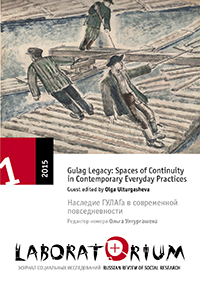Death and Redemption: The Gulag and the Shaping of Soviet Society, 2011; Gulag Voices: Oral Histories of Soviet Detention and Exile, 2011; Narrating the Future in Siberia: Childhood, Adolescence and Autobiography Among the Eveny, 2012
##plugins.themes.bootstrap3.article.main##
Аннотация
As the three texts reviewed here reveal, the heritage of the Soviet Gulag, a vast network of “corrective” facilities that stretched into the most unforgiving extremes of Soviet geography, is difficult not just because it attests to a decades-long regime of incarceration and organized state sponsored violence. It is also difficult because traces of that past live on in the present: in the lonely barracks and watchtowers that haunt Gulag landscapes; in the demographic composition of former Gulag towns, where many current residents are descendants of former prisoners and former guards; in the spontaneous memorials and state-sponsored museums; and in the memory of Gulag survivors, many of whom were instructed upon their release never to speak about their experiences.
Ключевые слова
Наследие ГУЛАГа, государственное насилие, тюремное заключение, устная история, принудительные работы, искупление, принудительное переселение, советский проект, советская темпоральность, коллективная травма, эвены, призраки прошлого
Abstract 134 | PDF (English) Downloads 87 HTML (English) Downloads 12

